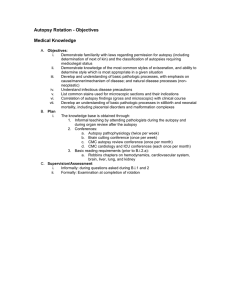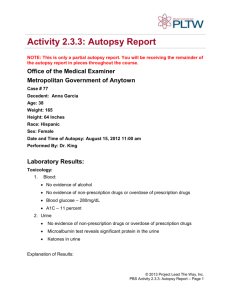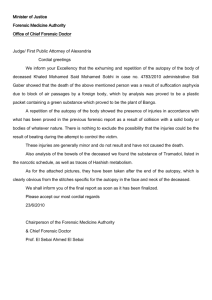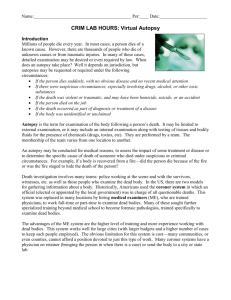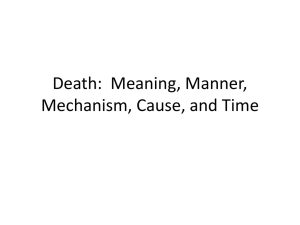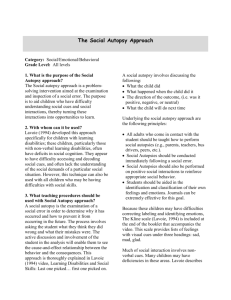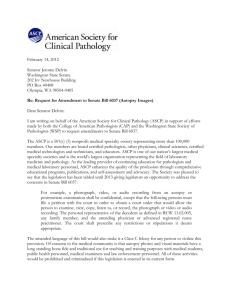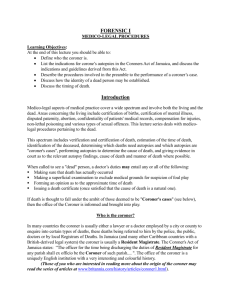Forensic Pathology Lecture Series
advertisement
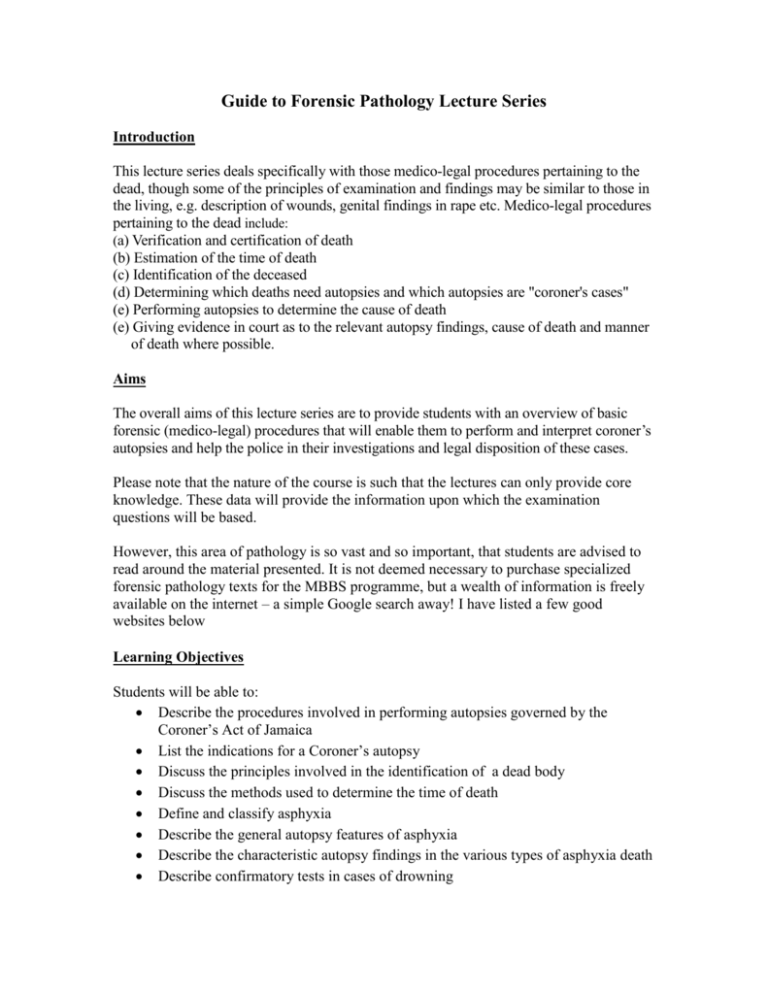
Guide to Forensic Pathology Lecture Series Introduction This lecture series deals specifically with those medico-legal procedures pertaining to the dead, though some of the principles of examination and findings may be similar to those in the living, e.g. description of wounds, genital findings in rape etc. Medico-legal procedures pertaining to the dead include: (a) Verification and certification of death (b) Estimation of the time of death (c) Identification of the deceased (d) Determining which deaths need autopsies and which autopsies are "coroner's cases" (e) Performing autopsies to determine the cause of death (e) Giving evidence in court as to the relevant autopsy findings, cause of death and manner of death where possible. Aims The overall aims of this lecture series are to provide students with an overview of basic forensic (medico-legal) procedures that will enable them to perform and interpret coroner’s autopsies and help the police in their investigations and legal disposition of these cases. Please note that the nature of the course is such that the lectures can only provide core knowledge. These data will provide the information upon which the examination questions will be based. However, this area of pathology is so vast and so important, that students are advised to read around the material presented. It is not deemed necessary to purchase specialized forensic pathology texts for the MBBS programme, but a wealth of information is freely available on the internet – a simple Google search away! I have listed a few good websites below Learning Objectives Students will be able to: Describe the procedures involved in performing autopsies governed by the Coroner’s Act of Jamaica List the indications for a Coroner’s autopsy Discuss the principles involved in the identification of a dead body Discuss the methods used to determine the time of death Define and classify asphyxia Describe the general autopsy features of asphyxia Describe the characteristic autopsy findings in the various types of asphyxia death Describe confirmatory tests in cases of drowning Define and classify poisons Discuss conditions affecting/modifying the action of poisons Discuss the autopsy procedure in cases of known/suspected poisoning and describe the specimens that should be sent for toxicology in such cases Describe the characteristic autopsy findings in deaths due to classic and common poisons Discuss the poisons that are common in the West Indies Define, classify and describe wounds Classify burns and describe typical autopsy findings in fatal burns cases Describe the various types of firearms and discuss basic principles of ballistics Describe bullet wounds with particular emphasis on the differences between entry and exit wounds Describe the features of fatal head injuries, especially those due to blunt force trauma Discuss the interpretation of fatal wounds especially as it concerns the giving of evidence in court Define sudden natural death and classify its causes Discuss the clinico-pathological features of sudden cardiac death Discuss sudden death due to drug abuse Define sudden infant death syndrome and discuss its aetiology and autopsy findings Describe the local autopsy findings in cases of sudden natural death Resources The following websites should prove to be helpful and instructive: 1) www.dundee.ac.uk/forensicmedicine This site has material for both medical and law students – I find them equally interesting. 2) www.forensicmed.co.uk 3) www-medlib.med.utah.edu/WebPath/TUTORIAL/GUNS/GUNINTRO Teaching Methods Teaching will be conducted using didactic lectures with appropriate adjunctive audiovisual aids. Any problems that arise in or outside of the lectures may be addressed on the message board set up for the class on Campus Pipeline. CTE/cte/Jan 2005

